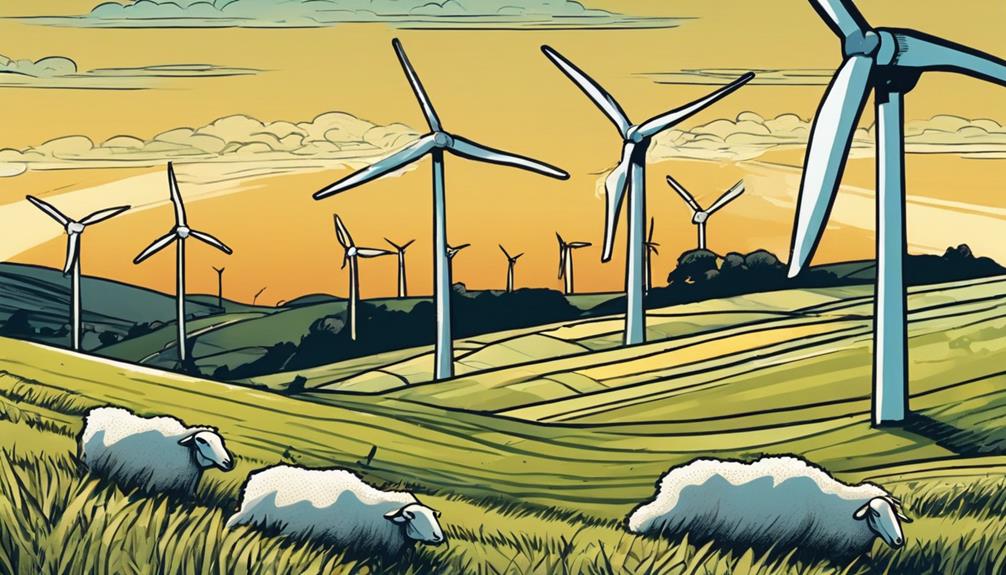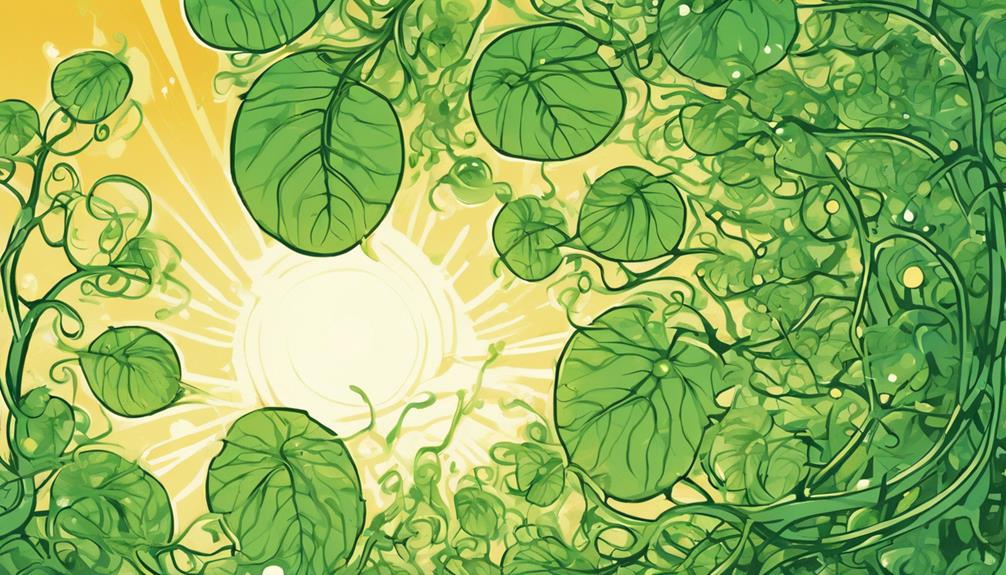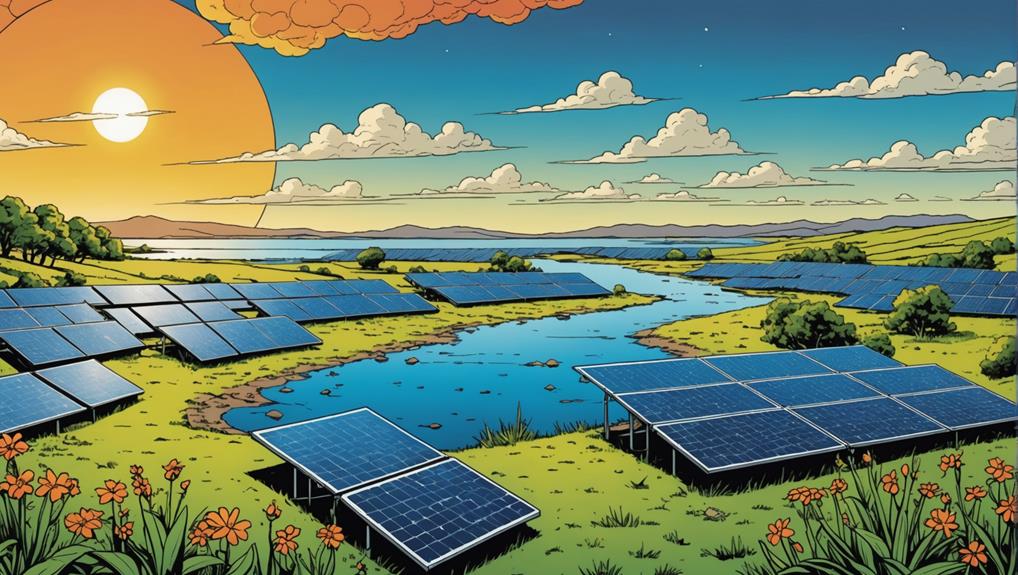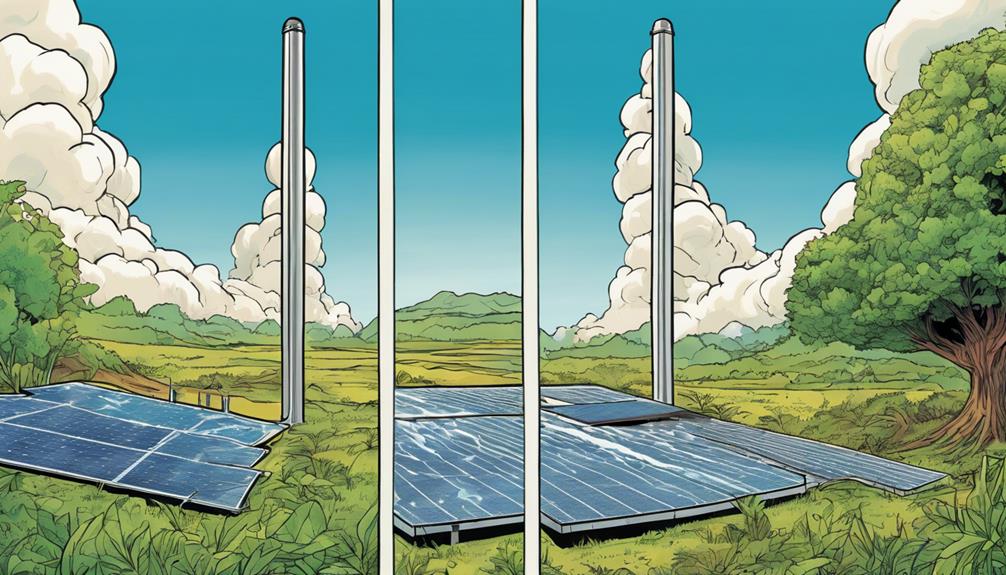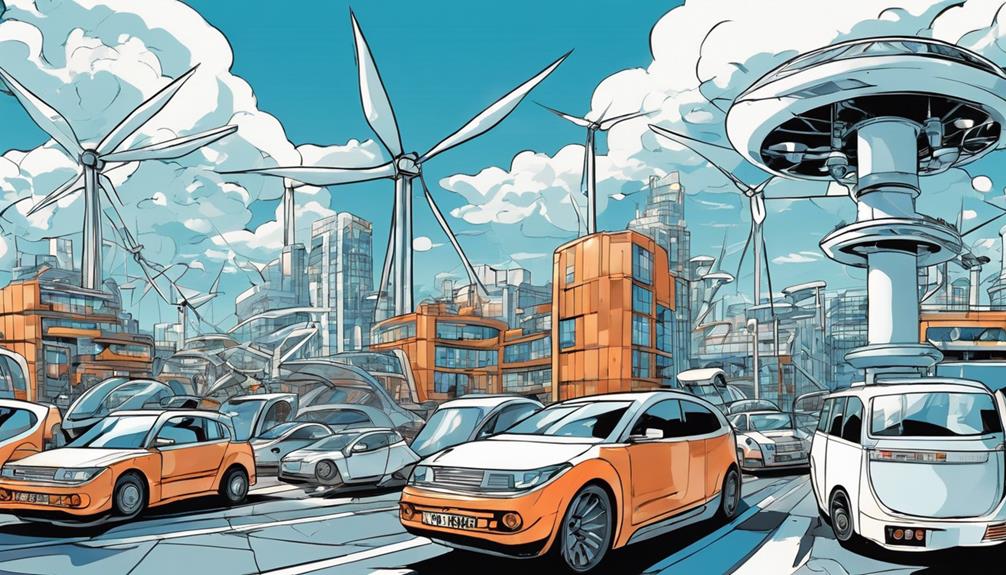You're weighing the pros and cons of wind farms as a renewable energy source. On the plus side, wind energy reduces carbon footprint, minimizes air pollution, and creates jobs. It's also cost-effective and economically viable. However, wind farms have limitations, including reliance on wind availability and the need for backup power sources. Visual and noise pollution concerns also exist. Despite these challenges, wind energy promotes sustainable energy sources and reduces greenhouse gas emissions. As you explore the advantages and disadvantages, you'll discover more about the complex balance between harnessing wind power and addressing its drawbacks. In addition, you’ll want to consider the impact of wind farms on wildlife, particularly birds and bats. It’s important to understand how wind turbines generate electricity and the potential impact on local ecosystems. By examining the full scope of issues, you can make a well-informed decision about the role of wind energy in a sustainable energy future. Understanding how wind turbines generate electricity is crucial to fully grasp the practical implications of integrating wind power into the energy grid.
Key Takeaways
- Wind farms offer a renewable energy source, reducing greenhouse gas emissions and reliance on finite fossil fuels.
- The wind industry creates jobs and stimulates local economies, with over 125,000 people employed in the U.S.
- Wind energy has low operating costs, making it a cost-effective and economically viable option.
- However, wind farms rely on wind availability, posing challenges for steady electricity supply and requiring backup power sources.
- Visual and noise pollution concerns must be balanced with wind energy benefits, necessitating proper siting and mitigation measures.
Environmental Benefits of Wind Energy
As you consider the benefits of wind energy, it's clear that harnessing the power of wind is a crucial step towards reducing your carbon footprint and mitigating the devastating effects of climate change. By switching to this renewable energy source, you're contributing to a notable decrease in greenhouse gas emissions.
Wind farms play a vital role in shifting to cleaner energy sources and reducing environmental impact. When properly planned, they can mitigate disruptions to local ecosystems and wildlife habitats. The environmental benefits of wind energy are indisputable.
By reducing your reliance on non-renewable energy sources, you're minimizing air pollution and carbon emissions. Wind energy is a sustainable alternative to fossil fuels, and its adoption can greatly reduce the strain on the environment.
As you invest in wind energy, you're investing in a cleaner, healthier planet. By choosing wind power, you're choosing a future with reduced pollution and a lower carbon footprint.
Economic Advantages of Wind Power
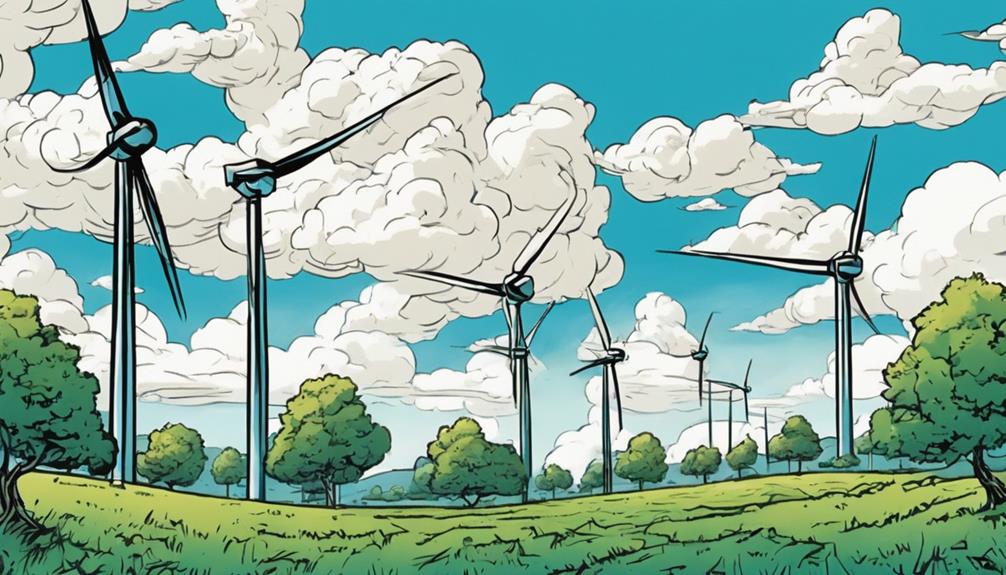
As you explore the economic advantages of wind power, you'll find that it's not only good for the environment, but also for your wallet.
You'll discover that wind power creates job opportunities and stimulates local economies, contributing notably to the country's economic growth.
Job Creation Opportunities
With the wind industry employing over 125,000 people in the U.S., you're likely to find a wide range of job opportunities in this growing field.
As the wind energy sector continues to expand, you can expect significant job creation and growth. In fact, wind turbine service technicians are the fastest-growing job in the U.S., offering a promising career path for those interested in this field.
The wind industry's job growth isn't limited to technicians, though – it also creates employment opportunities in manufacturing, installation, maintenance, and more.
Additionally, the industry's economic benefits extend beyond direct employment, contributing to workforce development and stimulating local economies. With investments in new wind projects adding billions to the U.S. economy, it's clear that the wind industry is a key driver of economic growth.
As the industry continues to thrive, you can expect to see even more job opportunities emerge, making it an exciting time to be a part of the wind energy sector.
Low Operating Costs
You'll find that one of the most significant economic advantages of wind power is its extremely low operating costs, making it a highly competitive option in the energy market.
Once the turbines are installed, you'll enjoy minimal expenses for maintenance and operational expenses compared to other energy sources. This cost-effectiveness contributes to wind energy's economic viability and long-term sustainability.
The low operating costs of wind power make it an attractive investment for businesses and governments looking to reduce energy expenses. In fact, the cost-efficiency of wind power helps drive growth in the renewable energy sector.
With wind energy, you can expect a significant reduction in your operational expenses, freeing up resources for other important areas. This cost savings can be reinvested in the business, driving growth and profitability.
As the demand for renewable energy continues to rise, the low operating costs of wind power will play an essential role in meeting this demand and promoting a sustainable future.
Challenges of Wind Energy Implementation
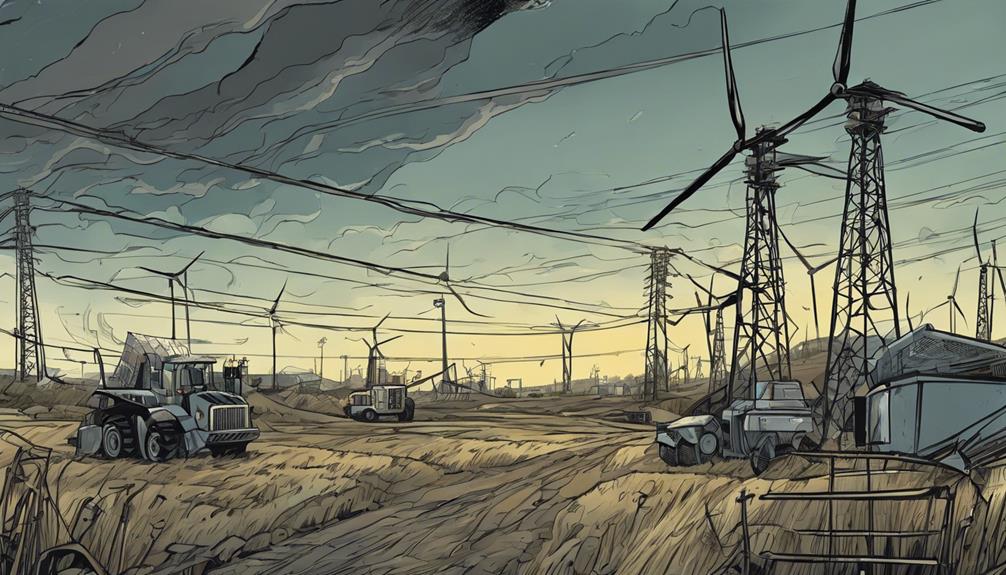
As you consider the benefits of wind energy, you'll also need to confront the challenges that come with implementing it.
You'll face issues like intermittent energy production, which can make it difficult to guarantee a steady supply of electricity.
Additionally, you'll need to think about the infrastructure and transmission requirements, which can be intricate and expensive to establish.
Intermittent Energy Production
One major challenge in implementing wind energy is that it's an intermittent source of power, relying heavily on wind availability to generate electricity. This means that you can't always count on wind farms to produce electricity when you need it. The variability of wind speeds poses challenges for maintaining a steady power supply from wind turbines.
Here are some key implications of intermittent energy production:
- You need backup power sources to guarantee grid stability when the wind isn't blowing.
- Managing the intermittency of wind energy is essential for integrating it effectively into the existing power grid.
- Storage solutions like batteries are being developed to store excess wind energy for use during low-wind periods.
- Consistent electricity generation is a challenge due to the unpredictable nature of wind availability.
- The grid stability is affected when the power supply from wind farms fluctuates.
Infrastructure and Transmission
Building wind farms in ideal locations often requires laying out new transmission lines to connect them to the grid, which can be a costly and complex process. You'll need to upgrade transmission networks to reduce costs associated with expanding land-based wind energy projects. The challenge lies in transporting wind energy from ideal windy locations to populated areas where energy demand is high.
This is especially true for offshore wind energy projects, which require significant investment in transmission infrastructure to bring power to shore.
To maximize the potential of wind energy and integrate it into the existing energy grid, you need efficient transmission infrastructure. This allows you to overcome the distance between wind farms and energy demand centers. By doing so, you can ensure a reliable and consistent supply of wind energy to meet the growing energy demand.
Efficient transmission is essential for wind energy integration, enabling you to make the most of this renewable energy source. By investing in transmission infrastructure, you can overcome the challenges of integrating wind energy into the grid and harness its full potential.
Visual and Noise Pollution Concerns
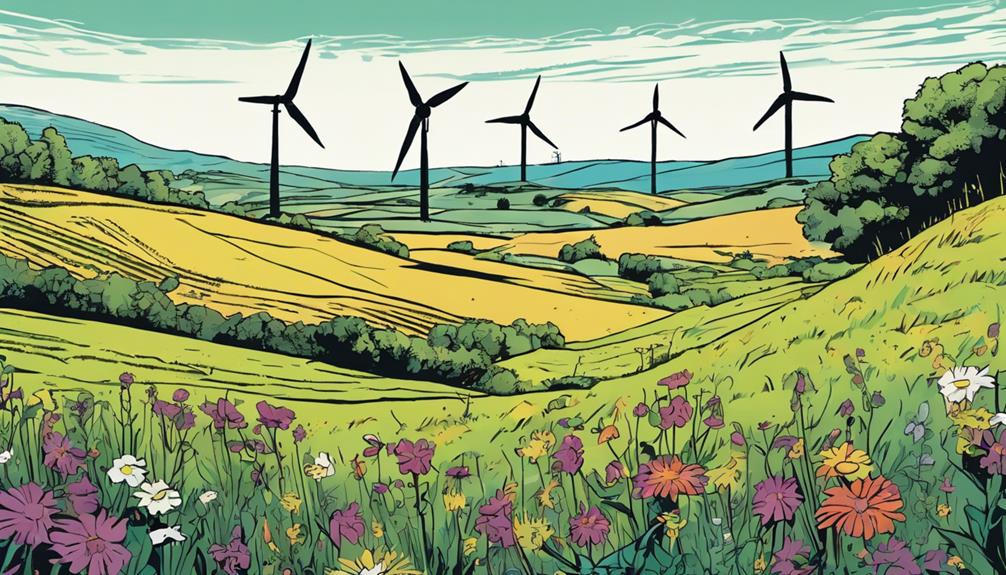
Your scenic views and peaceful nights may be disrupted by wind turbines, which can create visual clutter in landscapes and generate noise that's audible to nearby residents. While wind energy is a clean and renewable source, it's vital to recognize the potential drawbacks. Here are some key points to keep in mind:
- Wind turbines can create visual clutter in scenic settings, with some people finding them unattractive.
- Noise disturbance from wind turbines can be a challenge for nearby residents, impacting their quality of life.
- Studies have shown that wind turbine sounds can affect sleep patterns and the overall well-being of individuals living in close proximity.
- Mitigation measures like proper turbine siting and sound barriers can help reduce noise disturbances on local communities.
- Balancing the benefits of wind energy with the visual and noise pollution considerations is critical for sustainable wind farm development.
Job Creation and Industry Growth
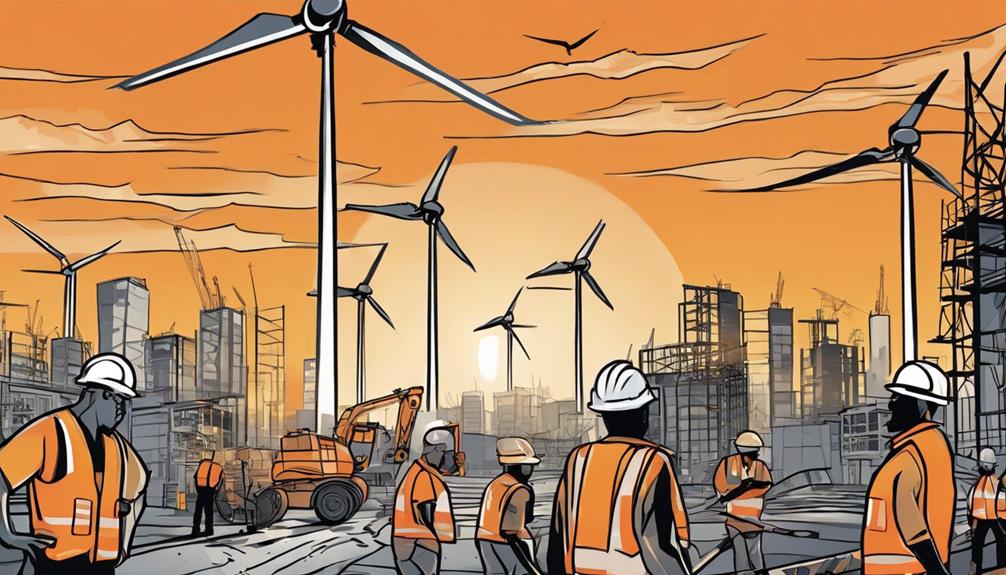
As you weigh the pros and cons of wind farms, it's heartening to know that they've already made a significant impact on the job market, with over 125,000 people employed in the U.S. wind industry.
In fact, wind turbine service technicians are the fastest-growing job in the U.S., offering a promising career path for many. The wind industry provides diverse career opportunities in various roles, from installation and maintenance to engineering and research.
Additionally, investments in new wind projects have added a substantial $20 billion to the U.S. economy in 2022, demonstrating the significant economic impact of wind farms.
As the demand for clean energy grows, wind power's contribution to the U.S. energy mix will continue to increase, with wind power already accounting for over 10% of the total energy in the U.S.
With job creation and industry growth going hand in hand, wind farms aren't only generating clean energy but also stimulating local economies and creating a workforce that's driving innovation.
Limitations of Wind Energy Generation
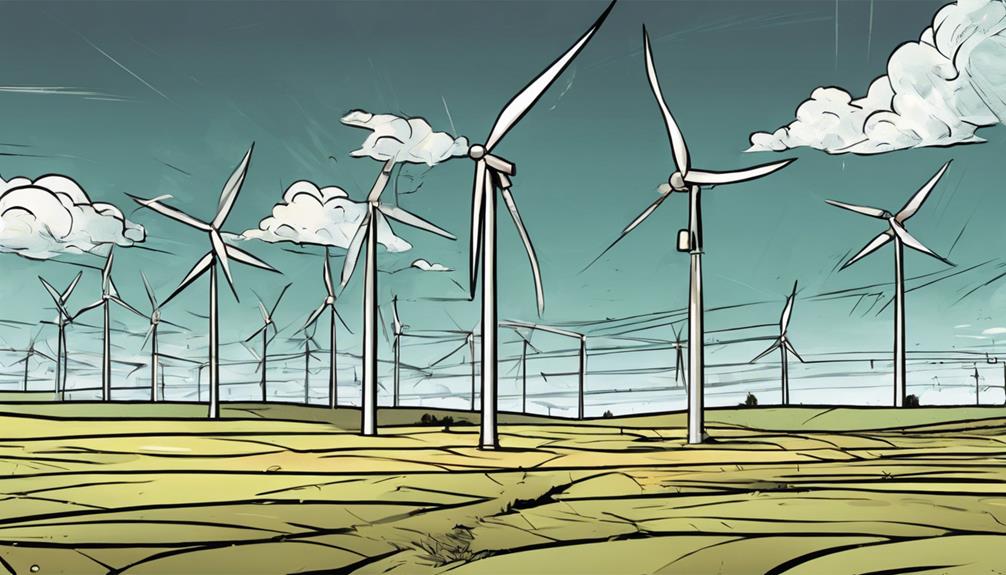
While contemplating the advantages of wind farms, acknowledging that wind energy generation comes with some significant limitations that can impact its reliability and widespread adoption is crucial. As you evaluate the pros and cons, it's vital to recognize the constraints that come with harnessing the power of wind.
Here are some key limitations to keep in mind:
- Wind energy generation is sporadic and less foreseeable than other sources, making it challenging to guarantee a consistent power supply.
- The fluctuating nature of wind speed and direction can affect the effectiveness of wind turbines, impacting the uniformity of energy production.
- Wind energy may not be feasible in regions with low wind speeds or inconsistent wind patterns, limiting its widespread adoption.
- Energy storage solutions are needed to address the sporadic nature of wind energy and ensure a dependable power supply.
Despite these limitations, progress in technology and grid integration are helping to alleviate the challenges of wind energy generation, paving the way for more efficient alternatives.
Promoting Sustainable Energy Sources
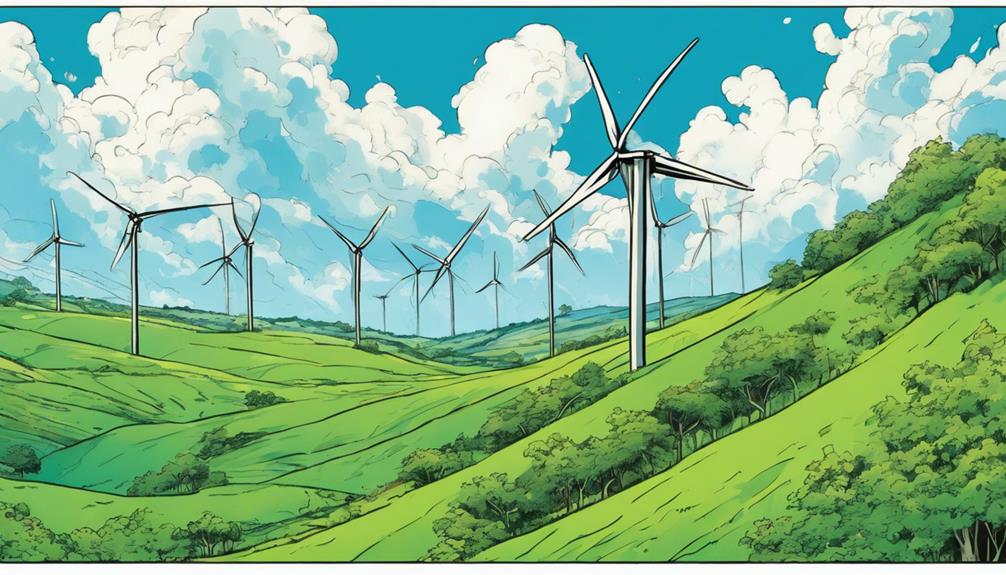
Wind farms take the lead in promoting sustainable energy sources by converting the kinetic energy of wind into a clean and renewable electricity supply. As you consider the advantages of wind energy, you'll find that it's a renewable energy source that reduces greenhouse gas emissions and dependence on fossil fuels. Wind farms contribute to job creation in the renewable energy sector, supporting economic growth and sustainability.
Here's a breakdown of the benefits:
| Aspect | Benefit | Impact |
|---|---|---|
| Energy Generation | Clean and renewable | Reduces greenhouse gas emissions |
| Job Creation | Supports economic growth | Promotes sustainability |
| Space Utilization | Space-effective | Efficient use of land |
Comparison to Traditional Energy Sources
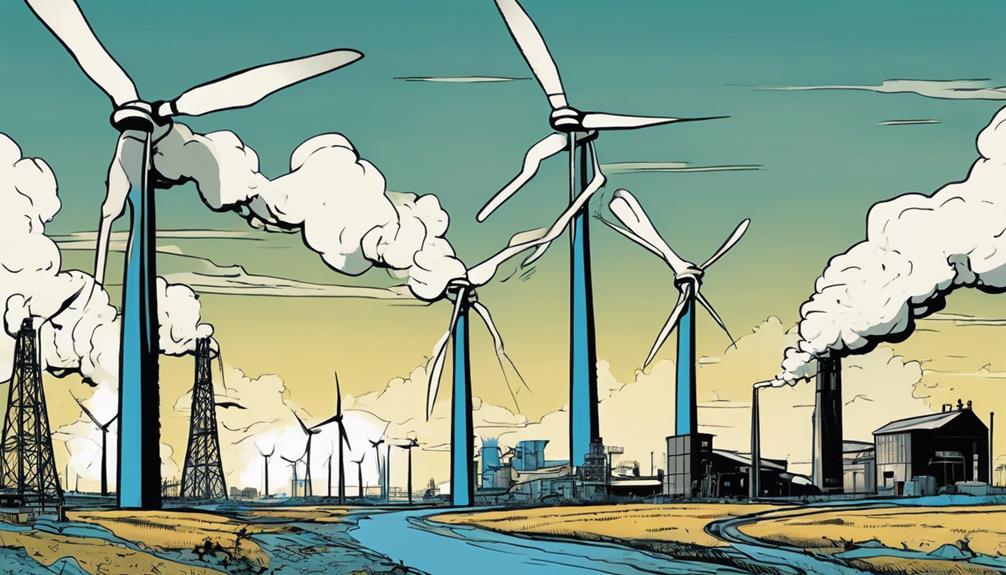
Traditional energy sources, like coal and natural gas, can't compete with wind farms when it comes to minimizing environmental impact, and their limitations are clear when you compare them side by side. You'll quickly realize that wind farms offer a more sustainable and environmentally friendly solution for energy generation.
Here are just a few key advantages of wind farms over traditional energy sources:
- Renewable energy source: Wind power is a renewable energy source that reduces reliance on finite fossil fuels, contributing to sustainability and energy security.
- Minimal greenhouse gas emissions: Wind farms produce minimal greenhouse gas emissions during operation, making them a cleaner alternative to traditional energy sources.
- Lower operating costs: Once the initial investment in turbine installation is made, wind farms have lower operating costs compared to traditional energy sources.
- Environmentally friendly: Wind farms promote sustainable energy sources and reduce the country's carbon footprint, making them an environmentally friendly option.
- Sustainable energy generation: Wind farms demonstrate a shift towards more environmentally friendly energy production methods compared to traditional sources.
Frequently Asked Questions
What Are 5 Advantages of Wind Energy?
You're wondering what benefits wind energy has to offer? Well, you'll be pleased to know that wind energy reduces greenhouse gas emissions, has low operating costs, is space-efficient, creates jobs, and boosts domestic economic growth!
What Are the Positive and Negative Effects of Wind Farms?
You're about to uncover the incredible truth: wind farms are like a gust of fresh air for the planet! On one hand, you'll reap the benefits of clean energy, job creation, and economic growth, but on the other, you'll face disruptions to wildlife and local resistance.
What Are the Disadvantages of Living Near a Wind Farm?
You'll likely face noise pollution from the turbines, visual disruptions to the landscape, potential health issues like headaches and sleep disturbances, decreased property values, and disrupted wildlife habitats if you live near a wind farm.
Are Wind Farms a Good or Bad Idea?
You're wondering if wind farms are a good or bad idea, and the answer isn't as clear-cut as you think. But here's the deal: despite some drawbacks, the benefits of clean energy, job creation, and reduced emissions make them a step in the right direction.
Conclusion
As you weigh the pros and cons of wind farms, remember that harnessing the wind is like sailing a ship – you can't control the breeze, but you can adjust the sails. Just as sailors adapt to the wind's whims, we must adapt to the ebbs and flows of wind energy.
Consider this: if just 1% of the world's wind were harnessed, it could power the entire planet.
The wind is blowing – will you catch the breeze?
